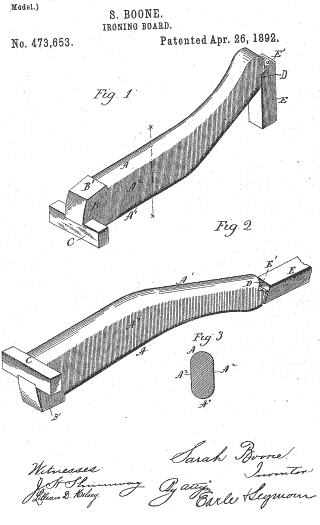Inventions Created By Black People
Time for me to list some inventions made by Black People:
Some Inventions Made by Black People
- Air conditioning unit: Frederick M. Jones; July 12, 1949
-
Almanac: Benjamin Banneker; Approx 1791
-
Auto cut-off switch: Granville T. Woods; January 1,1839
-
Auto fishing devise: G. Cook; May 30, 1899
-
Automatic gear shift: Richard Spikes; February 28, 1932
-
Baby buggy: W.H. Richardson; June 18, 1899
-
Bicycle frame: L.R. Johnson; Octber 10, 1899
-
Biscuit cutter: A.P. Ashbourne; November 30, 1875
-
Blood plasma bag: Charles Drew; Approx. 1945
-
Cellular phone: Henry T. Sampson; July 6, 1971
-
Chamber commode: T. Elkins; January 3, 1897
-
Clothes dryer: G. T. Sampson; June 6, 1862
-
Curtain rod: S. R. Scratton; November 30, 1889
-
Curtain rod support: William S. Grant; August 4, 1896
-
Door knob: O. Dorsey; December 10, 1878
-
Door stop: O. Dorsey; December 10, 1878
-
Dust pan: Lawrence P. Ray; August 3, 1897
-
Egg beater: Willie Johnson; February 5, 1884
-
Electric lampbulb: Lewis Latimer; March 21, 1882
-
Elevator: Alexander Miles; October 11, 1867
-
Eye protector: P. Johnson; November 2, 1880
-
Fire escape ladder: J. W. Winters; May 7, 1878
-
Fire extinguisher: T. Marshall; October 26, 1872
-
Folding bed: L. C. Bailey; July 18, 1899
-
Folding chair: Brody & Surgwar; June 11, 1889
-
Fountain pen: W. B. Purvis; January 7, 1890
-
Furniture caster: O. A. Fisher; 1878
-
Gas mask: Garrett Morgan; October 13, 1914
-
Golf tee: T. Grant; December 12, 1899
-
Guitar: Robert F. Flemming, Jr. March 3, 1886
-
Hair brush: Lydia O. Newman; November 15,18-- hand stamp: Walter B. Purvis; February 27, 1883
-
Horse shoe: J. Ricks; March 30, 1885
-
ice cream scooper: A. L. Cralle; February 2, 1897
-
Improve. sugar making: Norbet Rillieux; December 10, 1846
-
Insect-destroyer gun: A. C. Richard; February 28, 1899
-
Ironing board: Sarah Boone; December 30, 1887
-
Key chain: F. J. Loudin; January 9, 1894
-
Lantern: Michael C. Harvey; August 19, 1884
-
Lawn mower: L. A. Burr; May 19, 1889
-
Lawn sprinkler: J. W. Smith; May 4, 1897
-
Lemon squeezer: J. Thomas White; December 8, 1893
-
Lock: W. A. Martin; July 23, 18--
-
Lubricating cup: Ellijah McCoy; November 15, 1895
-
Lunch pail: James Robinson; 1887
-
Mail box: Paul L. Downing; October 27, 1891
-
Mop: Thomas W. Stewart; June 11, 1893
-
motor: Frederick M. Jones; June 27, 1939
-
Peanut butter: George Washington Carver; 1896
-
Pencil sharpener: J. L. Love; November 23, 1897
-
Record player arm: Joseph Hunger Dickenson January 8, 1819
-
Refrigerator: J. Standard; June 14, 1891
-
Riding saddles: W. D. Davis; October 6, 1895
-
Rolling pin: John W. Reed; 1864
-
Shampoo headrest: C. O. Bailiff; October 11, 1898
-
Spark plug: Edmond Berger; February 2, 1839
-
Stethoscope: Imhotep; Ancient Egypt
-
Stove: T. A. Carrington; July 25, 1876
-
Straightening comb: Madam C. J. Walker; Approx 1905
-
Street sweeper: Charles B. Brooks; March 17, 1890
-
Phone transmitter: Granville T. Woods; December 2, 1884
-
Thermostat control: Frederick M. Jones; February 23, 1960
-
Traffic light: Garrett Morgan; November 20, 1923
-
Tricycle: M. A. Cherry; May 6, 1886
-
Typewriter: Burridge & Marshman; April 7, 1885
Other things invented by Black People
Break Dancing
Chess
Jazz
Blues
Rap
Reggae, Ska
Rock and Roll
Super Water Blaster
Fiber Optics

Frederick Jones was born in Covington, Kentucky near Cincinnati, Ohio on on May 17, 1893. He was a trained mechanic, a skill he learned doing military service in France during World War. His mastery of electronic devices was largely self-taught, through work experience and the inventing process.
Frederick McKinley Jones was granted more than 40 patents in the field of refrigeration. Frederick Jones' inspiration for the refrigeration unit was a conversation with a truck driver who had lost a shipment of chickens because the trip took too long and the truck's storage compartment overheated. Frederick Jones also developed an air-conditioning unit for military field hospitals and a refrigerator for military field kitchens. Frederick Jones received over 60 patents during his lifetime.
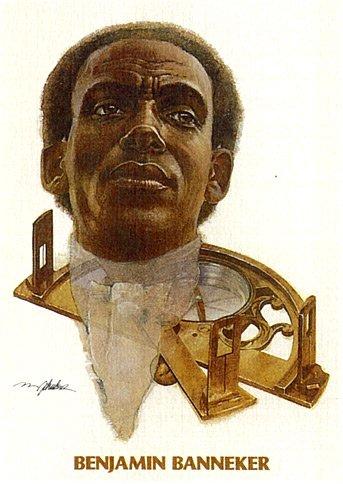
On November 9 1731, Benjamin Banneker was born in Ellicott's Mills, Maryland. He was the descendent of slaves, however, Banneker was born a freeman. At that time the law dictated that if your mother was a slave then you were a slave, and if she was a freewomen then you were a free person. Banneker's grandmother, Molly Walsh was a bi-racial English immigrant and indentured servant who married an African slave named Banna Ka, who had been brought to the Colonies by a slave trader. Molly had served seven years as an indentured servant before she acquired and worked on her own small farm. Molly Walsh purchased her future husband Banna Ka and another African to work on her farm. The name Banna Ka was later changed to Bannaky and then changed to Banneker. Benjamin's mother Mary Banneker was born free. Benjamin's father Rodger was a former slave who had bought his own freedom before marrying Mary.
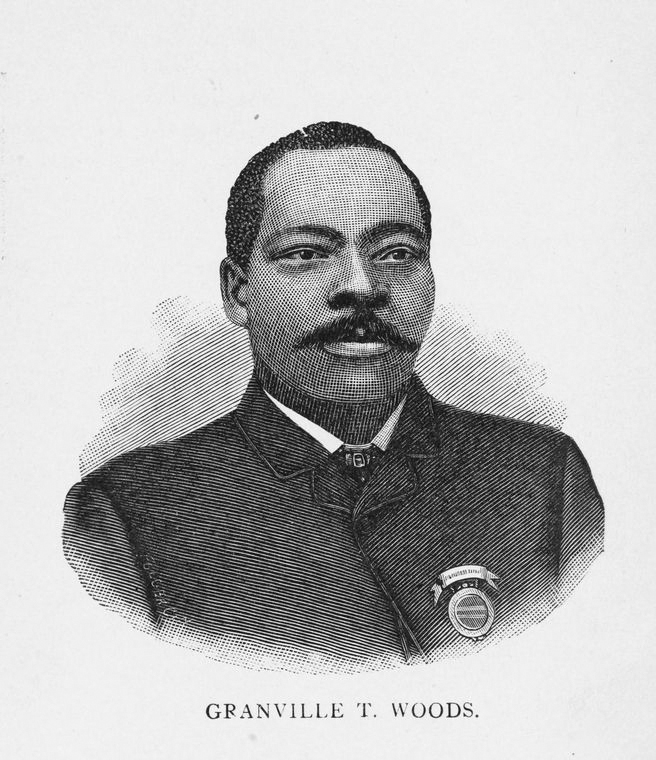
Fat man Granville T. Woods literally learned his skills on the job. Attending school in Columbus until age 10 (to help his father in a machine shop that made speed equipment for carriages and repaired railroad equipment and machinery), he served an apprenticeship in a machine shop and learned the trades of machinist and blacksmith. Intrigued by the electricity that powered the machinery, Woods studied other machine workers as they attended to different pieces of equipment and paid other workers to sit down and explain electrical concepts to him. During his youth he was inspired by Lewis Latimer, and he also went to night school and took private lessons. Although he had to leave formal school at age ten, Woods realized that learning and education was essential to developing critical skills that would allow him to express his creativity with machinery.
In 1872, Woods got a job as a fireman on the Danville and Southern Railroad in Missouri, eventually becoming an engineer. Surprisingly, it is unknown exactly where he attended school but it is believed it was an eastern college. He spent his spare time studying electronics. In 1874 Woods moved to Springfield, Illinois, and worked in a rolling mill. In 1878, he took a job aboard the Ironsides, a British steamer, and, within two years, became Chief Engineer of the steamer. Two years later he obtained employment with D&S Railroads, driving a steam locomotive. Unfortunately, despite his high aptitude and valuable education and expertise, Woods denied opportunities and promotions because of the color of his skin. Out of frustration and a desire to promote his abilities, Woods, along with his brother Lyates, formed the Woods Railway Telegraph company in 1884. The company manufactured and sold telephone, telegraph and electrical equipment. Finally, his travels and experiences led him to settle in Cincinnati, Ohio.And in kappa brother of mr.shepeard
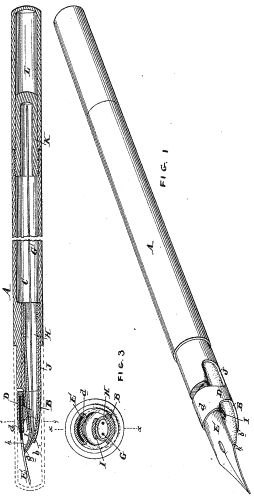
On January 7, 1890, W.B. Purvis, one of our great African-American inventors, received a patent for the fountain pen. Purvis saw the need for a more convenient way to sign letters and documents and decided to take action. The fountain pen made the use of an ink bottle obsolete by storing ink within a reservoir within the pen which is then fed to the tip of the pen.
Of his accomplishment, Purvis said, "the object of my invention is to provide a simple, durable, and inexpensive construction of a fountain pen adapted to general use and which may be carried in the pocket." The invention of the fountain pen is something that individuals and businesses all over the world are thankful for. They are cleaner and more efficient to use than a bottle of ink.
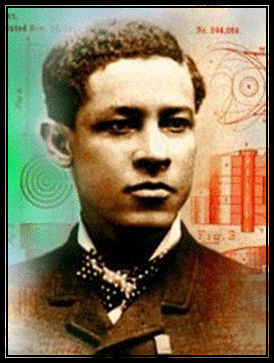
Richard Spikes of San Francisco, California patented or developed the following inventions:
- railroad semaphore (1906)
- automatic car washer (1913)
- automobile directional signals (1913) - manufactured by Pierce Arrow
- beer keg tap (1910) - purchased by Milwaukee Brewing Company.
- self-locking rack for billiard cues (1910)
- continuous contact trolley pole (1919) - used on on the famous San Francisco Key Line.
- combination milk bottle opener and cover (1926)
- method and apparatus for obtaining average samples and temperature of tank liquids (1931)
- improved automatic gear shift (1932) - licensed the patent for $100,000
- transmission and shifting thereof (1933)
- automatic shoe shine chair (1939)
- multiple barrel machine gun (1940)
- horizontally swinging barber chair (1950)
- automatic safety brake (1962) - year Richard Spikes died.
African American, Sarah Boone, patented an improvement to the ironing board (U.S. Patent #473,653) on April 26, 1892. Sarah Boone's ironing board was designed to be effective in ironing the sleeves and bodies of ladies' garments. As you can see from the patent drawing below, Sarah Boone's board was very narrow and curved, the size and fit of a sleeve, and it was reversible, making it easy to iron both sides of a sleeve. Below you can view the original patent drawing of Sarah Boone's ironing board.
